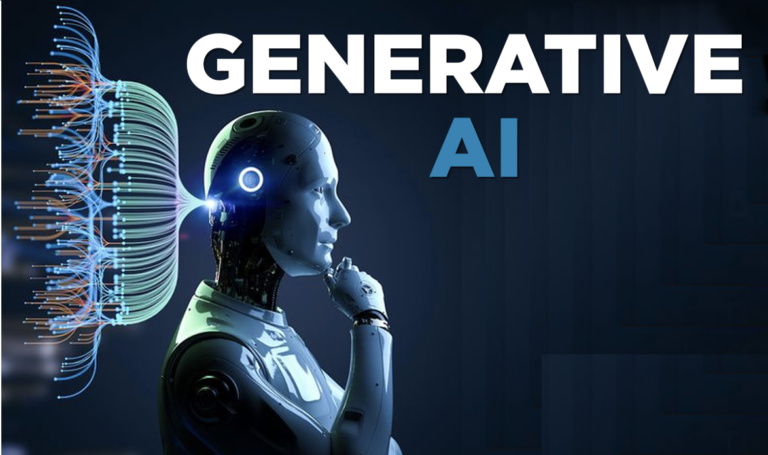Introduction
Generative AI technology has made significant advancements in recent years. It refers to artificial intelligence systems that can create new content, such as text, images, music, and even videos. While these technologies offer many benefits, they also introduce new cybersecurity challenges that organizations and individuals must address. This article will explore the various ways generative AI Technology impacts cybersecurity and the potential risks involved.
Understanding Generative AI
Large datasets are the source of learning for generative AI, which creates new material. A generative AI model trained on hundreds of photographs, for instance, can produce completely new images that exactly match the training set. Similar to this, language models like as GPT-3 can produce text that resembles that of a human being in response to cues. The potential of generative AI to create lifelike content gives rise to several security problems.
1. Deepfakes and Misinformation
Deepfake generation is one of the most urgent problems with generative AI. Deepfakes are artificial media in which a person’s image is altered to resemble someone else or is substituted with their own to depict them saying or acting in a way that they did not truly do. Malicious users of this technology may disseminate false information and disparage specific people.
Deepfake movies, for instance, might be used in political campaigns to deceive voters or harm people’s reputations. Cybersecurity experts face the difficulty of identifying these deepfakes before they do damage. With the advancement of deepfake technology, conventional techniques of verification might not be adequate.
2. Phishing Attacks
Another instance where generative AI is dangerous is in phishing assaults. Phishing emails are a common tool used by cybercriminals to deceive people into divulging personal information like credit card numbers or passwords. Attackers can produce extremely convincing phishing messages that imitate authentic communications from reliable sources by using generative AI.
An attacker could, for instance, create an email that looks to be from a bank or a well-known business using a language model. The probability that victims may fall for the scam increases if these emails contain personalised information that provide credibility to the message.
3. Automated Exploits
Generative AI can also be used by cybercriminals to automate exploits against vulnerable systems. By analyzing code and identifying weaknesses in software applications, generative models can help attackers develop malware more efficiently than ever before.
This means that even individuals with limited technical skills could potentially launch sophisticated attacks using tools powered by generative AI. As a result, organizations must remain vigilant and continuously update their security measures to defend against these evolving threats.
4. Data Privacy Concerns
Furthermore, there are serious data privacy issues with the application of generative AI. For training, many generative models need access to enormous volumes of data, which frequently contain private personal information about specific people without their knowledge or agreement.
Identity theft occurrences and major privacy violations may result from improper handling of this data or if it ends up in the wrong hands. Organisations using generative AI technology need to make sure they have strong data protection procedures in place.
5. Intellectual Property Issues
Generative AI also complicates intellectual property rights and ownership issues. When an AI creates original content—such as artwork or music—questions arise about who owns that content: the creator of the algorithm, the user who prompted it, or perhaps no one at all?
This ambiguity can lead to legal disputes and challenges for businesses trying to protect their intellectual property while leveraging generative technologies for innovation.
6. Security Vulnerabilities in Generative Models
Like any software system, generative models can have flaws that hackers could take advantage of. Adversarial assaults, for example, entail modifying input data in a way that makes an AI model provide inaccurate results.
These vulnerabilities put users who depend on the models’ outputs for decision-making processes in a variety of industries, including healthcare and finance, at risk in addition to the organisations that employ the models.
7. Regulation and Compliance Challenges
As generative AI continues to evolve rapidly, regulatory frameworks struggle to keep pace with technological advancements. Governments around the world are beginning discussions about how best to regulate these technologies while balancing innovation with public safety concerns.
Organizations must navigate this complex landscape carefully; failure to comply with emerging regulations could result in severe penalties and reputational damage.
Conclusion
In summary, while generative AI technology offers exciting possibilities across numerous fields—from creative arts to business solutions—it also brings forth significant cybersecurity challenges that cannot be ignored. From deepfakes and phishing attacks to data privacy concerns and intellectual property issues, stakeholders must work together proactively addressing these risks through education, robust security measures, and thoughtful regulation.
By understanding how generative AI impacts cybersecurity today—and anticipating future developments—organizations can better prepare themselves against potential threats posed by this powerful technology.



